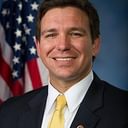On June 29, 2015, the U.S. Supreme Court denied Oklahoma prisoners’ lethal injection challenge in Glossip v. Gross. In a sweeping dissenting opinion, Justice Stephen Breyer, joined by Justice Ruth Bader Ginsburg, raised serious questions about the administration of the death penalty. Below are excerpts from the opinion with links to the DPIC resources cited in that opinion.
- Today’s administration of the death penalty involves three fundamental constitutional defects: (1) serious unreliability, (2) arbitrariness in application, and (3) unconscionably long delays that undermine the death penalty’s penological purpose. Perhaps as a result, (4) most places within the United States have abandoned its use.
- [T]he evidence that the death penalty has been wrongly imposed (whether or not it was carried out), is striking. As of 2002, this Court used the word “disturbing” to describe the number of instances in which individuals had been sentenced to death but later exonerated…Death Penalty Information Center (DPIC), Innocence: List of Those Freed from Death Row, online at DPIC Innocence List
- Despite the Gregg Court’s hope for fair administration of the death penalty, 40 years of further experience make it increasingly clear that the death penalty is imposed arbitrarily, i.e., without the “reasonable consistency” legally necessary to reconcile its use with the Constitution’s commands.
- Geography also plays an important role in determining who is sentenced to death…[W]ithin a death penalty State, the imposition of the death penalty heavily depends on the county in which a defendant is tried…Between 2004 and 2009, for example, just 29 counties (fewer than 1% of counties in the country) accounted for approximately half of all death sentences imposed nationwide. Smith 233. And in 2012, just 59 counties (fewer than 2% of counties in the country) accounted for all death sentences imposed nationwide. DPIC, The 2% Death Penalty: How A Minority of Counties Produce Most Death Cases At Enormous Costs to All 9 (Oct. 2013).
- The length of the average delay has increased dramatically over the years. In 1960, the average delay between sentencing and execution was two years…Ten years ago (in 2004) the average delay was about 11 years…By last year the average had risen to about 18 years. DPIC, Execution List 2014, supra.
- I recognize that a “lack of evidence” for a proposition does not prove the contrary. See Ring, supra, at 615 (one might believe the studies “inconclusive”). But suppose that we add to these studies the fact that, today, very few of those sentenced to death are actually executed, and that even those executions occur, on average, after nearly two decades on death row. DPIC, Execution List 2014, supra. Then, does it still seem likely that the death penalty has a significant deterrent effect?
- In 1999, 279 persons were sentenced to death. BJS 2013 Stats, at 19 (Table 16). Last year, just 73 persons were sentenced to death. DPIC, The Death Penalty in 2014: Year End Report 1 (2015)…That trend, a significant decline in the last 15 years, also holds true with respect to the number of annual executions. See Appendix B, infra (showing executions from 1977 – 2014). In 1999, 98 people were executed. BJS, Data Collection: National Prisoner Statistics Program (BJS Prisoner Statistics) (available in Clerk of Court’s case file). Last year, that number was only 35. DPIC, The Death Penalty in 2014, supra, at 1.
- [T]he direction of change is consistent. In the past two decades, no State without a death penalty has passed legislation to reinstate the penalty. See Atkins, supra, at 315 – 316; DPIC, States With and Without the Death Penalty, supra. Indeed, even in many States most associated with the death penalty, remarkable shifts have occurred. In Texas, the State that carries out the most executions, the number of executions fell from 40 in 2000 to 10 in 2014, and the number of death sentences fell from 48 in 1999 to 9 in 2013 (and 0 thus far in 2015). DPIC, Executions by State and Year.
- For the reasons I have set forth in this opinion, I believe it highly likely that the death penalty violates the Eighth Amendment. At the very least, the Court should call for full briefing on the basic question.



